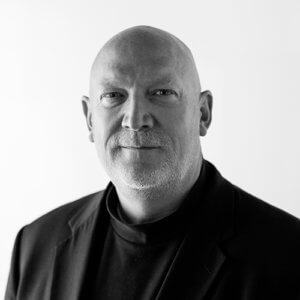“With a couple of billion dollars, you can some interesting things,” said LiveRamp CEO Scott Howe over smoked salmon sandwiches and coffee yesterday morning.
The occasion was a briefing for selected press on what life looks like from the perspective of a standalone company, LiveRamp having effectively extricated itself from the rest of Acxiom at the beginning of October. (Acxiom sold the non-LiveRamp parts of its business to IPG, and with only the LiveRamp offering remaining, re-named itself LiveRamp.) LiveRamp is now debt free and, said Howe, has two billion dollars on its balance sheet, some of which will be funneled back to investors.
Now? “We’re on of the biggest companies nobody has ever heard of,” said Howe. He compares LiveRamp to the Wizard of Oz, the man hidden behind the screen pulling all the important levers. Or even more colorfully, he explains that LiveRamp isn’t at any of the stops on the Gartner digital marketing transit map. It’s the routes between them. “We are the pipes, the rails, the electric grid,” he said. And although the data space is unquestionably complex today, he believes that one day — maybe in ten years — “we’ll talk about it in the same matter-of-fact way we talk about the phone grid or the power grid.
“I’ve been in digital marketing my whole life,” says Howe. After a spell as Corporate VP at Microsoft, on the adtech side, he joined Acxiom “seven or eight years ago,” becoming president and CEO. “I looked at Acxiom as a means to an end. There were things there that could be harnessed to make data easier for everyone.” But not enough, apparently. Acxiom acquired LiveRamp in 2014 because it simply had “better stuff” — to such an extent that Howe came to ask whether the rest of Acxiom’s marketing services were really needed, which is a chief reason LiveRamp stands alone today.
LiveRamp should hardly be new to DMN readers, but here’s Howe’s take on what it does. He sums it up as using “connected data” to drive “exceptional experiences.” The challenge, of course — and not just for marketing teams — is that data sits in different siloes, owned by different people, labeled in different ways.
Howe doesn’t just mean within the organization; he means across organizations. What Google knows about you, and what Facebook knows about you, is different from what your bank, your airline, or your preferred hotel chain knows. And they likely have what they know tagged in different, incompatible ways. LiveRamp’s mission: “Connect all of the world’s ethical data, with all of the world’s people, and with all the applications you can light up with that data.”
A tall order, but imagine the experiences which would result. Howe does emphasize “ethical.” To have a data grid (or identity graph) which everyone can plug into, means having a comprehensive understanding of the permissions consumers have given, and tight control of anonymity and privacy. Howe’s vision, which admits is a way down the road, is a centralized digital depository for privacy settings and data permissions where consumers can review, correct, and control the use of their own data.
He’s enthusiastic too about the trend represented by the Open Data Initiative, a project to develop consistent data standards announced by Adobe, Microsoft, and SAP. “Standards for quality and labeling, for freshness, for appropriate permissions; anything that takes uncertainty away and minimizes the risk of fraud is good for our industry.”
Howe also touched on what LiveRamp is not. It’s not a data broker; it’s not an agency; it’s not an app provider. “We’re not building a marketing cloud,” he said. The big marketing clouds, of course, are LiveRamp’s partners. Indeed: “We work with virtually every data company on the planet.”
So what’s next for this key piece of connective tissue? Acquisitions? Howe referred to the healthy balance sheet again. “We want to accelerate our own internal investment,” he said, seeing opportunities for more developers working on the increasingly high profile topic of data stewardship. As for buying solutions. “We’ve looked at 100 things every year the last four years, and made four acquisitions.” But if it advances the strategy and the vision: “Of course.”








